One is on standby for the Jules Verne Trophy and the associated record for a round-the-world trip without a crew stop, two launched a few months ago will, along with three others, be starting the Transat Jacques Vabre on 7th November and eight have announced their presence next year at the 12th Route du Rhum, the solo transatlantic that has made multihull history. But what we are talking about here are not just multihulls, or trimarans to be precise, but members of the Ultime 32/23 Class and, more generally, maxi-tri yachts. Classes and yachts that, despite their size – up to 40 metres in length – and the associated construction and management costs, show no signs of crisis. Especially since even these trimarans weighing up to 18 tonnes have started to “fly” on foils. In just a few years, this world has attracted major sponsors and skippers, at least in France, and has established the French firm of Marc Van Peteghem and Vincent Lauriot Prévost (VPLP) as the sector’s leading expert. VPLP has signed almost all the maxi-tri yachts in activity. In a couple of cases, he has teamed up with other designers such as Renaud Banuls and Gea Sea. The only other names in the sector are Nigel Irens with Benoit Cabaret and, above all, Guillaume Verdier who, together with the Rothschilds’ Gitana team, designed Gitana 17, the first maxi-tri foiling in history.
It all began in 2010 when the organisers of the Route du Rhum decided to create a new class for the classification of the race, bringing together the 60-foot (18-metre) ORMA trimarans and all the others, with no length limits. The aim was to give space both to the MOD 70 class (21.20 metres long by 16 metres wide), which in the intentions (unfortunately not fulfilled) was to be the class of the new circuit and oceanic trimarans, and to widen participation to the maxi-tri yachts then in activity. This meant Groupama 3 (30 metres by 22.50 metres, VPLP design, launched in 2006)
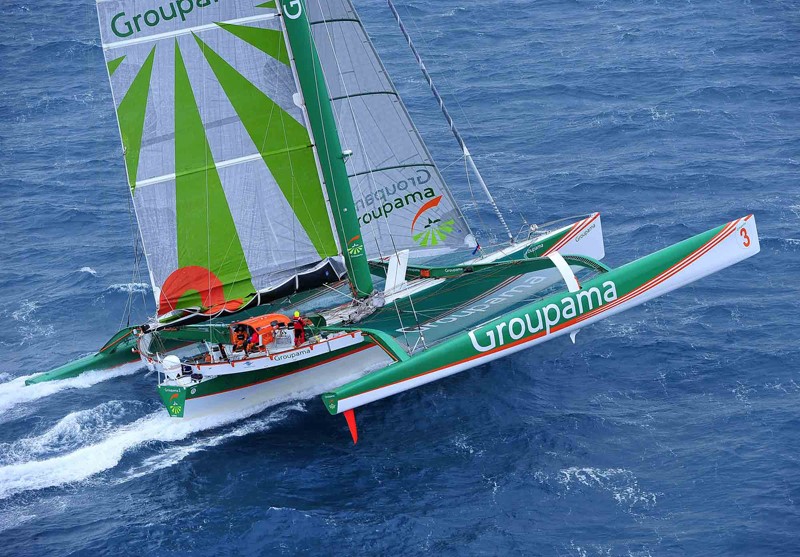
and the “old” Idec (launched in 1986 as Poulain, 23 metres long and then lengthened over the years to 27 metres).
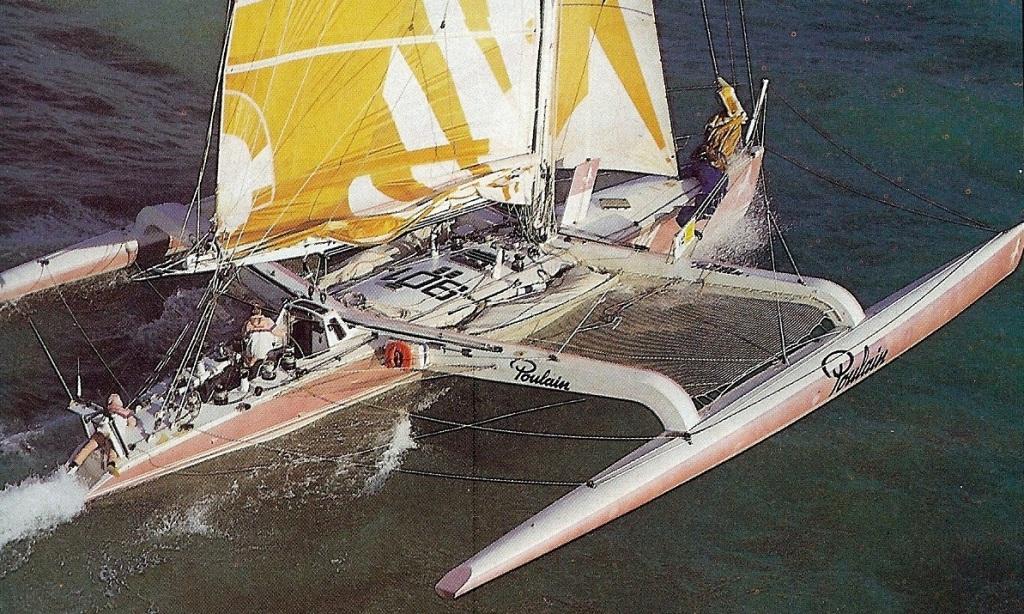
In her previous life, Idec was called “Un Autre Regard” and, under the command of Frenchman Olivier de Kersauson, in 1989 she set a record for going round the world in just over 125 days. Today, the record set in 2017 by Francis Joyon with Idec Sport 3 (formerly Groupama 3, VPLP project, 2006 launch, 31.50 metres by 22.50) is 40 days, 23 hours, 30 minutes and 30 seconds.
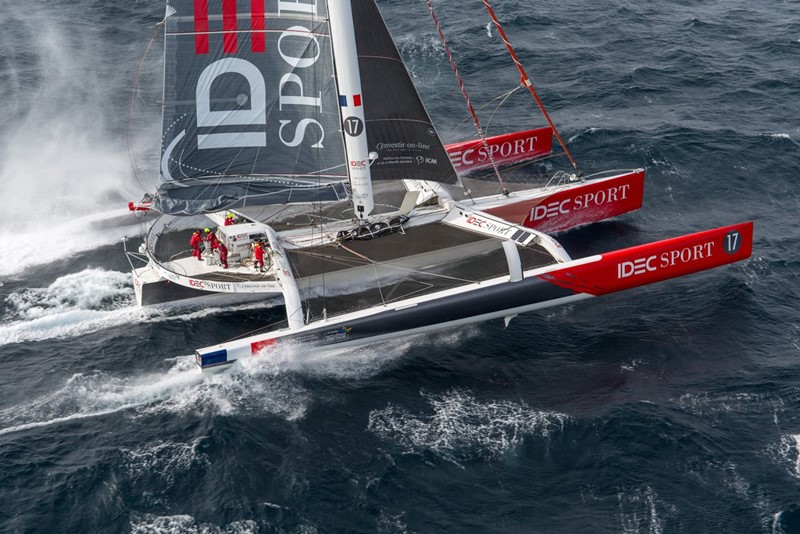
But, going back to the first Idec, this VPLP project had also sailed as ‘Charal’, the name of a French meat company owned by Raul Gardini who, after leaving Ferruzzi, had also dedicated himself to this sector. Olivier de Kersauson, with Charal, had launched his assault on the Jules Verne Trophy in 1993 but had been stopped in the South Atlantic by a collision with a drifting log. Continuing the story, in 2015, five years after the Route du Rhum initiative, a group of teams involved in maxi-tri yachts set the maximum size of the new class to be called “Ultim 32/23” by placing the length between 23 and 32 metres. A decision that excludes both the MOD 70s and those such as Yann Guichard and Dona Bertarelli’s Spindrift 2, which reaches 40 metres. However, this exclusion has no impact on the fledgling Ultim 32/23 Class, which has grown with four new boats since 2015. The turning point in 2017 was Gitana 17, built by two Italian companies: Persico Marine (deckhouse up to the mast, rudders and elevator) and Refraschini, who made the foils. Persico Marine is also involved in the construction of the foils (designed by Martin Fisher, co-coordinator of Luna Rossa Prada Pirelli Team’s design team for the America’s Cup in Auckland 2021) of the second “flying” Ultim 32/23, Sodebo Ultime 3, which went into the water in 2018 with an innovative, low, windowed deckhouse with manoeuvres and wheelhouses inside and forward of the mast.
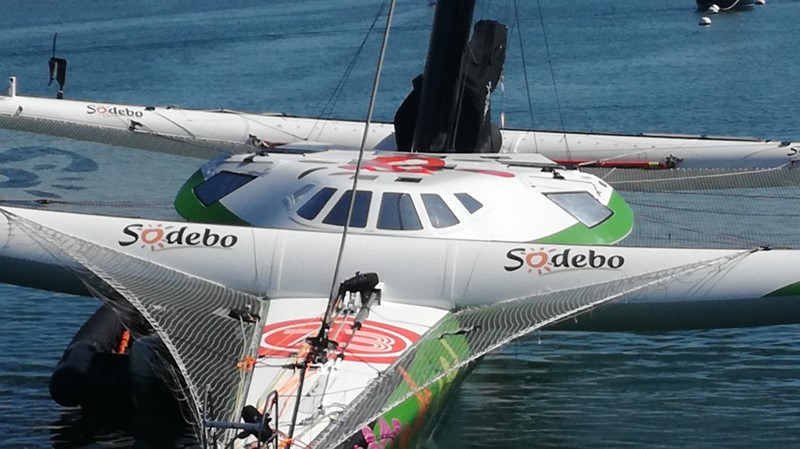
The third launch, in April 2021, will be that of Banque Populaire XI , sistership of Sodebo Ultim 3, but with new foils and a “solo” layout given that 2023 will see the first solo round-the-world race on the Ultim 32/23. Four teams have already signed up to take part.
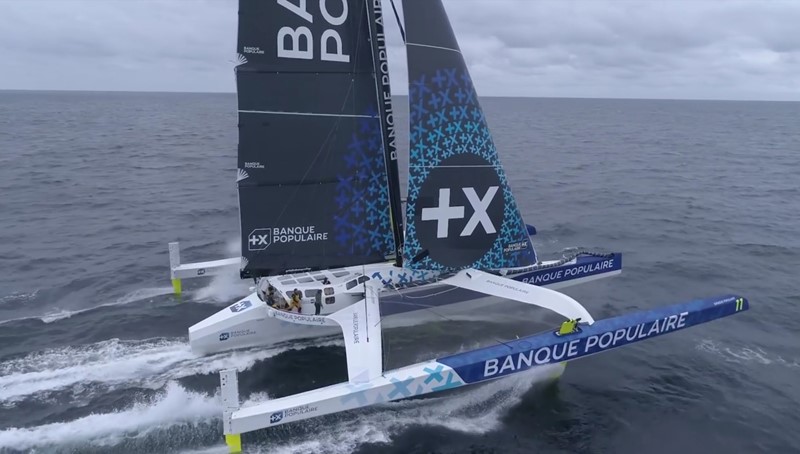
The latest launch was last July by SVR-Lazartique. This is obviously a VPLP project in partnership with Mer Concept and marks the entry of a new brand into the maxi-tri world alongside the historic ones: the French group Kresk. With the arrival of foils, and with all the “old” Ultim 32/23s that have been, or are planning to be, implemented with new load-bearing surfaces, a new season is beginning. But in 2020 the Class is entering a crisis due to the difficulty of combining the programmes of teams with different calendars and objectives. There are two main problems: the different levels of development of the various yachts and the discussion on the “skate wing”, the centreboard, or rather the upside-down T-shaped hull elevator that made its appearance with Gitana 17. The differences were such that the Gitana team left the class to continue its research.
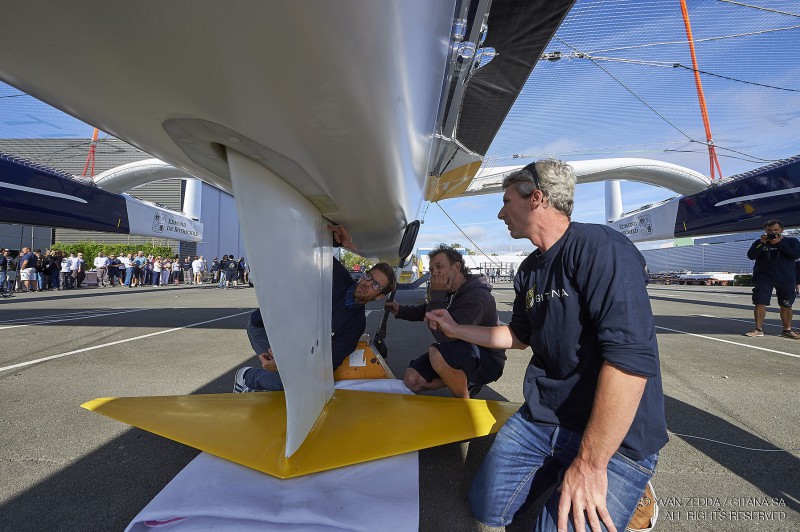
But in addition to increasingly efficient foils, the “old” maxi-tri yachts are committed to improving an element that distinguishes the last two: the aerodynamics of the boat as a whole. This is the new area of research and work. Banque Populaire XI points the way, where work has been carried out on all the surfaces exposed to the air in the deck plan, the design of the deckhouse, the layout and organisation of the cockpit and the manoeuvres.
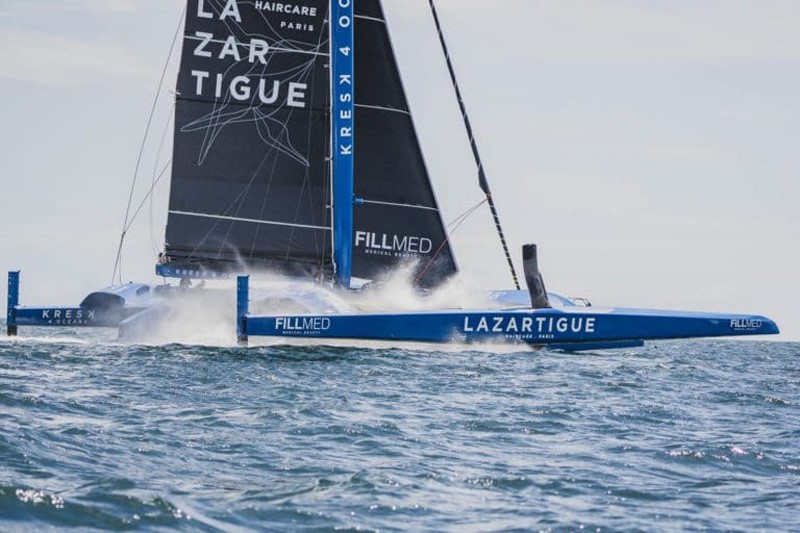
On the brand new SVR Lazartigue, the crossbars linking the central hull and side hulls have become wings and the deckhouse has literally disappeared. Only two Plexiglas domes similar to those found on a fighter plane mark the control station on the deck. From there the skipper, who has all the manoeuvres inside, manages the boat.
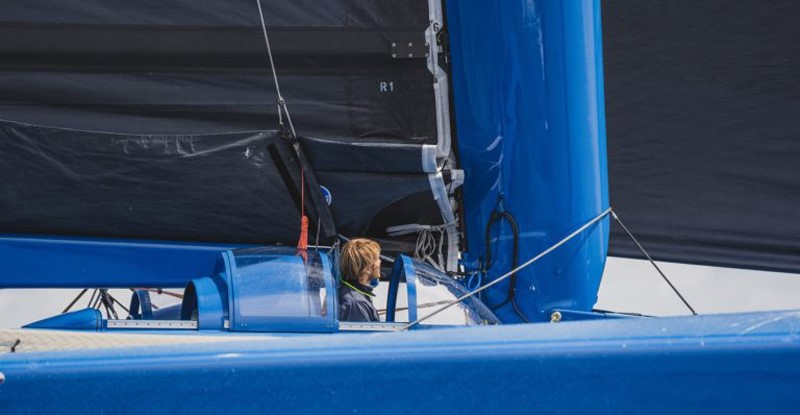
This solution has been taken to the extreme, but has also been anticipated on the Banque Populaire XI and the Hugo Boss Imoca (VPLP’s 2019 project), with its “living and control cell” that extends all the way to the stern and houses all the manoeuvres. A solution, the latter, which has also been applied on Spindrift 2. As well as being shortened from 40 to 37 metres to improve trim and control in view of a new assault on the round-the-world record, Yann Guichard and Dona Bertarelli’s maxi-tri – now renamed after their ecological foundation, Change of Sails – has also undergone a general aerodynamic refinement with the deckhouse being enlarged to protect the crew and improve the profile exposed to the wind. With traditional boats, resistance in the water is the main focus of research, but now, with foiling hulls that have two or three points of contact with the water and the boat “submerged” but in the air, aerodynamic resistance is of crucial importance. In short, the challenge now is to improve Cx, the aerodynamic coefficient. And today SVR Lazartique, with its design solutions, is the benchmark for the entire maxi-tri world. “If we were to design a new Ultim, we’d have to start with SVR Lazartique”. Word Vincent Lauriot Prévost with Marc van Peteghem and their studio, experts in multihulls.
Emilio Martinelli






